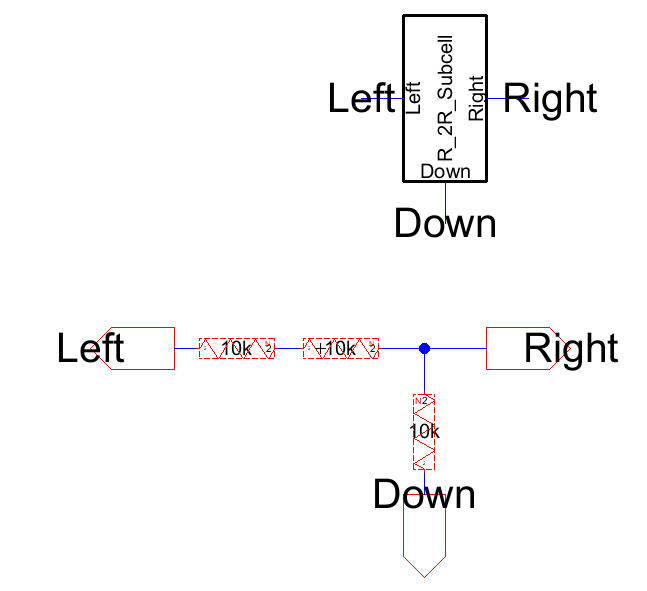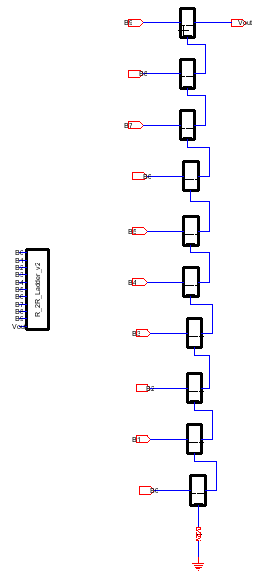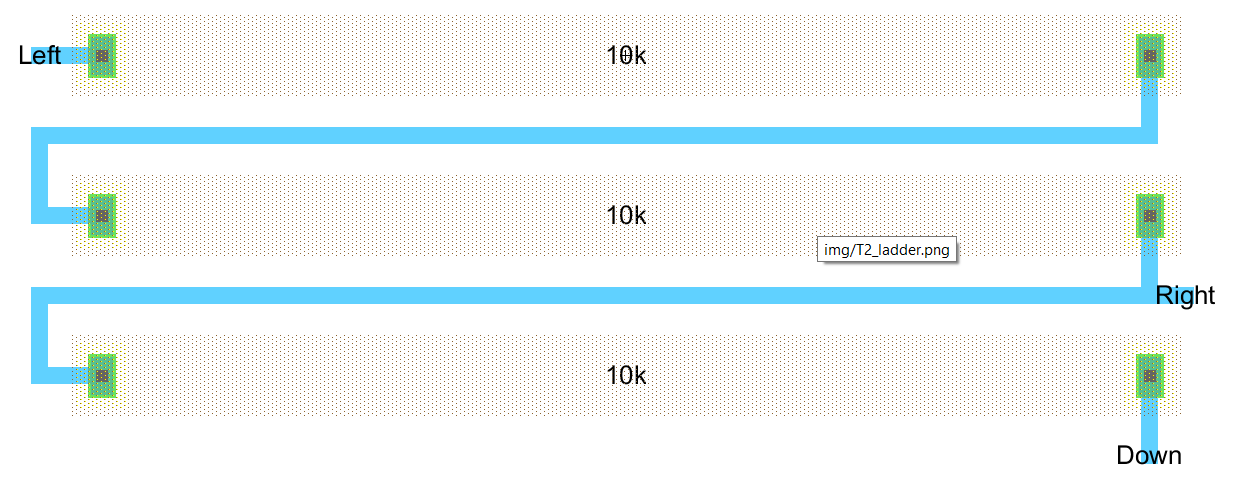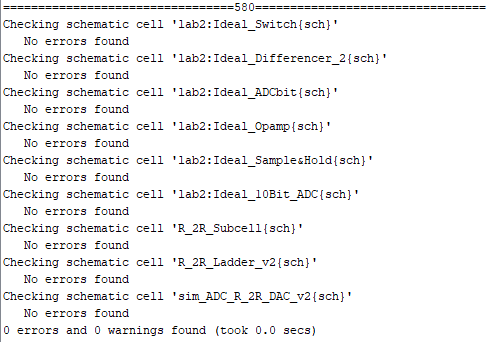
Figure 1: Schematic view of the R-2R sub cell.
The resistor ladder was simplified into the following, using the R-2R sub cell.

Figure 2: Schematic view of the R-2R ladder composed of the sub cells.
|
|
|
| Item |
Quantity |
|
|
|
| LTspice Electric VLSI Ideal ADC/DAC Library |
1 1 1 |
|
|
|






